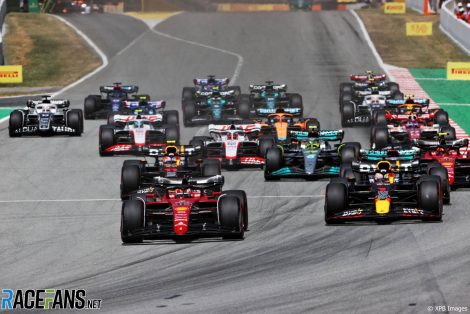The beginning of a bold new era of Formula 1 in 2022 had truly been a bright one for Ferrari following two winless years mired in mediocrity.
But while Charles Leclerc’s two victories, four pole positions and four podium appearances in the first five races had left none questioning Ferrari’s speed, the team’s spotless reliability record in races – with zero mechanical retirements in ten combined starts – had built the narrative that they held a key advantage over their far more fragile Red Bull opponents.
That perception was reinforced during qualifying for the Spanish Grand Prix, when Max Verstappen’s rear wing began misbehaving, failing to open when the driver instructed during his final flying lap, robbing him of a realistic last chance to take pole position. Leclerc gladly accepted this opening invitation to secure the top spot on the grid – his second pole in succession.
While Verstappen was understandably frustrated, he at least could draw consolation from the fact Red Bull were able to address the fault pre-race, replacing the DRS actuator and flap pins. Problem solved, surely?
Not that Verstappen’s DRS would be of much use to him over the 600 metres between the start line and the first corner as he aimed to jump the championship leader at the start of the race, under the gaze of over 150,000 spectators slowly being baked under the Spanish sun around the Circuit de Catalunya, the five red lights flashed on in order before rapidly extinguishing.
When they did, Verstappen’s initial launch was a touch cleaner than Leclerc’s. But before the Red Bull could use his momentum to draw alongside, the Ferrari covered off the inside line, holding it through the first corner and, with it, the lead. Behind, Carlos Sainz Jnr proved a little too eager in his desire to join that exclusive club of grand prix winners in front of his home crowd and almost jumped the start from third on the grid, catching…

